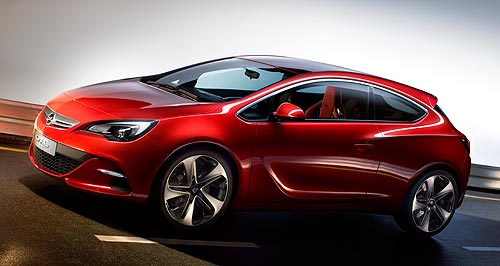Thursday, September 30, 2010
McLaren MP4-12C pics
 McLaren MP4-12C wallpaper
McLaren MP4-12C wallpaper McLaren MP4-12C image
McLaren MP4-12C image new McLaren MP4-12C
new McLaren MP4-12C McLaren MP4-12C photo
McLaren MP4-12C photo McLaren MP4-12C picture
McLaren MP4-12C pictureTwenty years of sports car design, engineering and production combined with inspirational success in Formula 1 have driven Ron Dennis, McLaren Automotive Chairman, to announce his plans for the ultimate line-up of technology-led and customer-focused performance cars for the 21st century. The rules in the sports car world are about to be re-written.
Through a rich modern history, McLaren's automotive division has already built the world's most critically acclaimed supercar, the McLaren F1 (1993-1998) and the world's best-selling luxury supercar, the Mercedes-Benz SLR McLaren (2003-2009). McLaren Automotive now looks to the future with a new range of revolutionary sports cars.
"It is a long-held dream of mine to launch a range of high performance sports cars that set new standards in the industry," said Dennis.
"We began designing and building cars for aficionados of thoroughbred sports cars almost 20 years ago. Incorporating the leading edge technologies that the McLaren Group has built up within its various companies, I believe we are now perfectly placed to open up this new chapter in McLaren's history as well as play a part in the regeneration of high-tech manufacturing in the UK and global automotive environment," he concluded.
At its heart, the McLaren MP4-12C features a revolutionary carbon fibre chassis structure, the Carbon MonoCell: the first time a car in this market segment is based around such a strong and lightweight racing car engineering solution and the first time any car has ever featured a one-piece carbon fibre structure.
This step change in sports car design means that the 12C introduces new standards not just in handling, ride and outright performance, but also safety, economy and practicality in an already competitive sector.
Martin Whitmarsh, Team Principal of McLaren's racing team highlighted the integral part that McLaren's motorsport and road car experience played in developing the 12C: "McLaren has for years offered a potent mix of race car and road car technologies. This combination of McLaren's performance heritage, and future demands on what is expected of high performance sports cars in the 21st century, gave us a head-start when we embarked on this project. The 12C, and future variants, draws on the spirit of Formula 1 and delivers real-world technological advances."
The first car from the new company, the McLaren MP4-12C, is a high performance two-seat mid-engine model in the 'core' sports car market segment for cars costing between £125,000 and £175,000. The 12C is pure McLaren, featuring no carryover parts from any other car, and will be produced by McLaren in the UK. It goes on sale through a dedicated, worldwide retailer network in early 2011.
"McLaren is already a car maker with maturity and experience, having produced iconic cars such as the F1," said Antony Sheriff, McLaren Automotive Managing Director.
"The next step was to construct a range of pure McLaren high performance sports cars that are true to the company's philosophy and reflect our position as an absolute technology and performance leader. So, when we embarked on the 12C project, we wanted to re-write the rules of sports car design. Indeed, the 12C offers performance and technology that exceeds that of the world's most expensive and sophisticated supercars, while competing in a much more accessible market segment. And to achieve this result, we designed every component from scratch to meet the extreme goals of the 12C and avoid any compromise."
"Forget what you know about sports car companies, McLaren is different," he concluded.
Inside out
The heart of the new car is the Carbon MonoCell. McLaren pioneered the use of carbon composite construction in the 1981 Formula 1 MP4/1 model and set a trend that all Formula 1 teams have followed. The company brought carbon fibre to road cars for the first time with the 1993 McLaren F1 and then built on this experience with a carbon fibre chassis and body on the SLR manufactured to the same exacting standards, but in higher volumes.
So, until now, carbon chassis have remained the preserve of the most expensive exotic cars; a purchase for the super-rich where costs are driven by the complexity of carbon fibre chassis design and build.
The 12C changes this by introducing the advantages of carbon composite - light weight, high strength and torsional rigidity, and longevity - to a more affordable sector through its revolutionary engineering as a one-piece moulding. Never before has a carbon fibre chassis been produced this way.
The 12C MonoCell not only brings dynamic benefits, but also offers fundamental engineering opportunities that form the basis of the car's unique character. It has been designed to allow a much narrower structure overall which in turn contributes to a more compact car that is easier to position on the road and more rewarding to drive.
Not only is the 12C unique in its class by offering carbon technology, it also has the highest specific power output as well as extraordinary power- and torque-to-weight ratios. Furthermore, the Proactive Chassis Control system offers groundbreaking handling and ride comfort while an intense focus on occupant packaging offers new levels of comfort and everyday usability.
Antony Sheriff explained. "With the 12C we are redefining the relationship between performance and practicality, as well as performance and efficiency, achieving leading positions in both. We have designed this car from the inside out. We have a saying in McLaren - 'everything for a reason' and the 12C will surprise people in many ways.
"A clear illustration of its special qualities is in the efficiency of its power delivery. With the 12C's power output of around 600hp and its low CO2 emissions, it delivers the highest horsepower to CO2 ratio of any car on the market today with an internal combustion engine...and that includes petrol and diesel hybrids," Sheriff concluded.
Pure McLaren
All the parts of the McLaren MP4-12C are bespoke and unique to this car. Everything from the engine right down to the tailor-made switches and buttons is pure McLaren: nothing has come from another manufacturer's parts bin.
The 12C is powered by a bespoke McLaren 'M838T' 3.8 litre, V8 twin-turbo engine producing around 600bhp, driving through a McLaren seven speed Seamless Shift dual clutch gearbox (SSG). It is targeting not only new standards for power and performance in its sector, but also class-leading fuel economy and CO2 emissions; supported by McLaren's experience of active aerodynamics to aid cooling, grip, handling and road holding.
"The 12C is all about performance," said Sheriff. "And in McLaren, we have a very broad definition of performance. We don't just look at the traditional one-dimensional parameters like top speed, we focus equally on useable measures such as in-gear acceleration times, braking performance in all conditions, and efficiency of power delivery combined with the lowest possible fuel consumption and CO2 emissions. Sure, 12C is very fast, but it is also the most efficient, most driveable high-performance sports car in the world.
"In the more subjective areas of road-holding, handling, comfort, driver involvement and day-to-day usability, McLaren is achieving new standards for a mid-engined high performance sports car in this sector," he concluded.
Thorough engineering and market research led to concept development and a clear decision in favour of a mid-engined two door high performance sports car. Intensive work was carried out in the wind tunnel and the driving simulator to ensure that the new car would inherently have superb dynamic qualities.
Dick Glover, McLaren Automotive Technical Director, was closely involved with the development of these invaluable tools during his time with McLaren's Formula 1 race team.
"There are so many examples of race car process and technology transfer in the 12C," claimed Glover. "The car owes much to McLaren's experience and success in motor sport. The advantage of technology transfer is only one element; speed of decision-making and development, F1 processes and people all make an important contribution.
"Brake Steer, for example, is a technology we pioneered on our Formula 1 car back in 1997. It helps to dial out understeer on entry to a corner and improves traction on the way out. Another is the Pre-Cog function on the gearshift rocker that effectively primes the gearbox ready for the next change, ensuring a more satisfying and faster gearchange. This is a high performance sports car with race car genes and teamwork at its heart."
Adding lightness
Weight is the enemy of performance in every area of car design. It affects acceleration, speed, handling, fuel consumption and CO2 emissions - everything. McLaren Automotive engineers pursued weight saving obsessively. For example:
* The Carbon MonoCell not only reduces the weight of the structure but also allows for the use of much lighter weight body panels.
* The close position of the driver and passenger allows a narrower, lighter body while giving improved visibility with a clearer perception of the car's extremities.
* Brakes with forged aluminium hubs save 8 kg and weigh less than optional carbon ceramic brakes.
* Lightweight exhaust pipes exit straight out the rear of the car, minimizing their length and weight.
* Airflow-assisted Airbrake deployment dramatically reduces weight of the Airbrake activation system.
* Small, compact downsized engine coupled to lightweight compact SSG minimizes vehicle length, weight and polar moment of inertia.
* Significant weight was pared off the alloy wheels through intensive Finite Element Analysis of wall thicknesses.
* The engine cooling radiators were mounted at the rear, as close to the engine as possible, to minimize the pipework, the fluids contained within them, and therefore weight. They were also mounted in car line to minimize vehicle width.
Tuesday, September 28, 2010
2011 Lamborghini Gallardo LP570-4 Blancpain cars pics
Automobili Lamborghini and Blancpain are uniting their phenomenal engineering skill and honoring the huge success of the Lamborghini Blancpain Super Trofeo racing series with a very special super sports car: the new Lamborghini Gallardo LP570-4 Blancpain Edition.
This extraordinary super sports car joins the competition spirit of the Super Trofeo race car with an exclusive design and one hundred percent road-going usability. The first Gallardo from the exclusive and limited Blancpain Edition production run has been presented by Stephan Winkelmann, President and CEO of Automobili Lamborghini, and Marc A. Hayek, President and CEO of Blancpain, at the final race weekend of the Lamborghini Blancpain Super Trofeo on Sunday September 26, 2010 in the "Piero Taruffi" circuit, Vallelunga.
Automobili Lamborghini, the manufacturer of extreme Italian super sports cars, and Blancpain, the world's oldest luxury watchmaker, are among the very best brands in their respective sectors worldwide. Blancpain was recently voted the "Best of the Best" among the world's most exquisite watch brands by the "Luxury Institute" in New York. Now the two brands have come together to develop a unique blend of technology and design to create the Lamborghini Gallardo LP570-4 Blancpain Edition, putting the power of the world's fastest mono-marque race series into a road-legal vehicle.
Blancpain is the title sponsor of the successful Lamborghini Blancpain Super Trofeo series. The cooperation between these two brands brings together the highest levels of engineering excellence from the automotive and chronometry industries. Blancpain has been producing innovative masterpieces of watch-making art in Switzerland's Vallée de Joux since 1735. Each timepiece is assembled by one single watchmaker, reflecting the quality and individual attention with which Lamborghini builds its super sports cars for the road, and its 570 hp Super Trofeo race cars. 2011 Lamborghini Gallardo LP570-4 Blancpain car
2011 Lamborghini Gallardo LP570-4 Blancpain car
 2011 Lamborghini Gallardo LP570-4 Blancpain
2011 Lamborghini Gallardo LP570-4 Blancpain
 2011 Lamborghini Gallardo LP570-4 Blancpain wallpaper
2011 Lamborghini Gallardo LP570-4 Blancpain wallpaper
 2011 Lamborghini Gallardo LP570-4 Blancpain image
2011 Lamborghini Gallardo LP570-4 Blancpain image
 2011 Lamborghini Gallardo LP570-4 Blancpain
2011 Lamborghini Gallardo LP570-4 Blancpain
This extraordinary super sports car joins the competition spirit of the Super Trofeo race car with an exclusive design and one hundred percent road-going usability. The first Gallardo from the exclusive and limited Blancpain Edition production run has been presented by Stephan Winkelmann, President and CEO of Automobili Lamborghini, and Marc A. Hayek, President and CEO of Blancpain, at the final race weekend of the Lamborghini Blancpain Super Trofeo on Sunday September 26, 2010 in the "Piero Taruffi" circuit, Vallelunga.
Automobili Lamborghini, the manufacturer of extreme Italian super sports cars, and Blancpain, the world's oldest luxury watchmaker, are among the very best brands in their respective sectors worldwide. Blancpain was recently voted the "Best of the Best" among the world's most exquisite watch brands by the "Luxury Institute" in New York. Now the two brands have come together to develop a unique blend of technology and design to create the Lamborghini Gallardo LP570-4 Blancpain Edition, putting the power of the world's fastest mono-marque race series into a road-legal vehicle.
Blancpain is the title sponsor of the successful Lamborghini Blancpain Super Trofeo series. The cooperation between these two brands brings together the highest levels of engineering excellence from the automotive and chronometry industries. Blancpain has been producing innovative masterpieces of watch-making art in Switzerland's Vallée de Joux since 1735. Each timepiece is assembled by one single watchmaker, reflecting the quality and individual attention with which Lamborghini builds its super sports cars for the road, and its 570 hp Super Trofeo race cars.
 2011 Lamborghini Gallardo LP570-4 Blancpain car
2011 Lamborghini Gallardo LP570-4 Blancpain car 2011 Lamborghini Gallardo LP570-4 Blancpain
2011 Lamborghini Gallardo LP570-4 Blancpain 2011 Lamborghini Gallardo LP570-4 Blancpain wallpaper
2011 Lamborghini Gallardo LP570-4 Blancpain wallpaper 2011 Lamborghini Gallardo LP570-4 Blancpain image
2011 Lamborghini Gallardo LP570-4 Blancpain image 2011 Lamborghini Gallardo LP570-4 Blancpain
2011 Lamborghini Gallardo LP570-4 Blancpain2011 Opel GTC Paris top cars pics
The best of Opel’s compact car technology is brought to its sportiest level on the GTC Paris. The chassis has a special design with an extra-wide stance. It features a compound crank with an Opel-exclusive Watt’s link in the rear, a new, updated execution of the adaptive mechatronic FlexRide suspension and a front electronic limited slip differential. The GTC Paris is planted to the ground with dynamic 21-inch wheels.
The powertrain in the GTC Paris is a four-cylinder, 2.0 liter Turbo with direct injection, packing maximum horsepower and torque. It is fitted with Start/Stop technology, proving that drivers can combine high performance with maximum fuel efficiency in urban driving conditions. The transmission is a six-speed manual gearbox. 2011 Opel GTC Paris
2011 Opel GTC Paris
 2011 Opel GTC Paris pic
2011 Opel GTC Paris pic
 2011 Opel GTC Paris car
2011 Opel GTC Paris car
 2011 Opel GTC Paris car pic
2011 Opel GTC Paris car pic
 2011 Opel GTC Paris wall
2011 Opel GTC Paris wall
The GTC Paris concept car embodies the passionate side of Opel: Its role is to show how Opel can “dial up” the brand’s now established design direction by creating a very sporty and emotional interpretation.
The GTC Paris is designed to be artistically sculpted using sweeping dynamic lines. At the same time, it is engineered with German precision and energized with technical innovation, like a 2.0 liter Turbo gasoline engine with direct injection, a new execution of the fully adaptive FlexRide suspension and an limited slip differential in the front.
This three-door sporty hatch is pure but sporty, simple but expressive and at the same time bold and iconic. Keeping in line with Opel’s DNA, it is an achievable dream car, conceived to showcase an energized brand. This energy is also conveyed by the vibrant and expressive Liquid Metal Red exterior color.
Coming close on the heels of the new generation Astra Sports Tourer which will also debut at the Paris motor show, the GTC Paris is how Opel envisions the next logical step of a newly shaped line-up.
The powertrain in the GTC Paris is a four-cylinder, 2.0 liter Turbo with direct injection, packing maximum horsepower and torque. It is fitted with Start/Stop technology, proving that drivers can combine high performance with maximum fuel efficiency in urban driving conditions. The transmission is a six-speed manual gearbox.
 2011 Opel GTC Paris
2011 Opel GTC Paris 2011 Opel GTC Paris pic
2011 Opel GTC Paris pic 2011 Opel GTC Paris car
2011 Opel GTC Paris car 2011 Opel GTC Paris car pic
2011 Opel GTC Paris car pic 2011 Opel GTC Paris wall
2011 Opel GTC Paris wallThe GTC Paris is designed to be artistically sculpted using sweeping dynamic lines. At the same time, it is engineered with German precision and energized with technical innovation, like a 2.0 liter Turbo gasoline engine with direct injection, a new execution of the fully adaptive FlexRide suspension and an limited slip differential in the front.
This three-door sporty hatch is pure but sporty, simple but expressive and at the same time bold and iconic. Keeping in line with Opel’s DNA, it is an achievable dream car, conceived to showcase an energized brand. This energy is also conveyed by the vibrant and expressive Liquid Metal Red exterior color.
Coming close on the heels of the new generation Astra Sports Tourer which will also debut at the Paris motor show, the GTC Paris is how Opel envisions the next logical step of a newly shaped line-up.
Sunday, September 26, 2010
New Cars 2011 Porsche 911 Carrera GTS
 As standard, the Porsche 911 Carrera GTS has a six-speed manual gearbox and the seven-speed Porsche Doppelkupplungsgetriebe (PDK), is available as an option. Compared Carrera S. The upper speed GTS with manual transmission increases 2mph to 190 mph. In general, the acceleration from zero to 62mph is improving, 0.1 seconds; for GTS Coupé with PDK and Sport Chrono Package Plus Sport Plus mode, the source sprint takes only 4.2 seconds.
As standard, the Porsche 911 Carrera GTS has a six-speed manual gearbox and the seven-speed Porsche Doppelkupplungsgetriebe (PDK), is available as an option. Compared Carrera S. The upper speed GTS with manual transmission increases 2mph to 190 mph. In general, the acceleration from zero to 62mph is improving, 0.1 seconds; for GTS Coupé with PDK and Sport Chrono Package Plus Sport Plus mode, the source sprint takes only 4.2 seconds.
 Special attention was paid to charge exchange in the 3.8-litre flat engine delivering 408 hp: In a special resonance intake manifold, six vacuum-controlled tuning flaps switch between power- and torque-optimized geometry whereas in a Carrera S power unit there is only one tuning flap. Thus, maximum torque of unchanged 420 Nm is already available at 4,200 rpm, 200 rpm earlier compared with the Carrera S. Add to that a sports exhaust system with two dual tailpipes. Their outer shells are painted in black and their inner tubes are polished on the outside and nano-coated.
Special attention was paid to charge exchange in the 3.8-litre flat engine delivering 408 hp: In a special resonance intake manifold, six vacuum-controlled tuning flaps switch between power- and torque-optimized geometry whereas in a Carrera S power unit there is only one tuning flap. Thus, maximum torque of unchanged 420 Nm is already available at 4,200 rpm, 200 rpm earlier compared with the Carrera S. Add to that a sports exhaust system with two dual tailpipes. Their outer shells are painted in black and their inner tubes are polished on the outside and nano-coated.Unique within the 911 Carrera family, the GTS combines the 44 millimetre wider body of the all-wheel drive Carrera 4 models – including widened rear track – with a classic rear-wheel drive configuration. The Porsche 911 Carrera GTS sits on 19-inch centre-locking RS Spyder alloy wheels, painted in black with high-gloss finished rims, with 235/35 ZR 19 tyres on the front axle and 305/30 ZR 19 tyres on the rear. Further features include the SportDesign front apron with spoiler edge painted in black, special side skirts also in black, and the Carrera GTS logotype on doors and rear lid, in black or silver depending on the body colour. The area between the two tailpipes on the rear apron is also finished in black.
The new Porsche 911 Carrera GTS will have its global debut at the 2010 Paris Motor Show on October 2 and goes on sale in the UK in December, priced from £76,758 for the Coupe and £83,493 for the Cabriolet.


Saturday, September 25, 2010
2010 Infiniti IPL G Cabrio Concept walpaperz
 2010 Infiniti IPL G Cabrio Concept pic
2010 Infiniti IPL G Cabrio Concept pic 2010 Infiniti IPL G Cabrio Concept image
2010 Infiniti IPL G Cabrio Concept image 2010 Infiniti IPL G Cabrio Concept photo
2010 Infiniti IPL G Cabrio Concept photo 2010 Infiniti IPL G Cabrio Concept
2010 Infiniti IPL G Cabrio Concept 2010 Infiniti IPL G Cabrio
2010 Infiniti IPL G CabrioSculptured side sill extensions work with the bigger wheels and slightly lowered body to accentuate the purposeful new stance. A body-colour bootlid spoiler, based on the aerodynamic design of that fitted to the IPL G Coupé, adorns the rear.
The interior trim finishers are unique to the Paris concept. The centre console is finished with black lacquer while the dashboard area above the glove box and doors are adorned with KACCHU, the name given to the armour used by Japan's feudal warlords, or samurai, in the Middle Ages. Small iron plates were woven through textile to provide not just great strength but also flexibility and light weight. Because the highly skilled process allowed for a multitude of colours and patterns, the most elaborate KACCHU designs were a sign of great power and wealth.
Under the bonnet of the Infiniti IPL G Cabrio Concept is Infiniti's charismatic 3.7-litre V6 boasting 338 PS, 18 PS more than standard thanks to a high-flow dual exhaust system. It doesn't just sound great but also reduces exhaust pressure by 30%, further enhancing engine efficiency. The point at which peak power is developed has been boosted, from 7000 to 7400 rpm - high revs which the VQ engine's motor racing-inspired "bed plate" construction technique can take in its stride.
Maximum torque output is increased - from 360 to 374 Nm - but most important the shape of the torque curve has been refined so performance doesn't feel in any way peaky, maintaining the linear acceleration so crucial to any Infiniti.
The Cabrio Concept's running gear has been upgraded, again following the lead set by the IPL G Coupé. Sports suspension, with 10% stiffer springs and recalibrated dampers, are fitted and the body sits a little lower.
Top speed of the de-restricted concept car, which has a seven speed automatic transmission with magnesium paddle shifts, is more than 270 km/h, with 0-100 km/h available in under 6 seconds.
Nothing in the IPL philosophy calls for a let-up in the provision of features as standard. The Infiniti IPL G Cabrio Concept maintains this Infiniti advantage by being superbly well equipped with an array of innovative comfort, convenience and safety technologies - just like the GT Premium model on which it is based and which has been available as part of the G Line in Infiniti Centres across Europe for more than a year.
So in league with the high performance looks and ability are features such as noise-cancelling technology, head restraint-mounted "personal" speakers, seats with internal heating and cooling and adaptive climate control. The 13-speaker premium sound system is by Bose® while suggestions on where to visit, stay or eat and drink are sourced from the Michelin Guides directly into the 30 GB hard disk drive navigation. It's just one part of the all-encompassing functionality of the Connectiviti+ infotainment system which the G Cabrio first introduced to the world at the model's launch in 2009.
Monday, September 20, 2010
bugatti Veyron Roadster interior photos
bugatti Veyron Roadster images
 bugatti Veyron Roadster 2010
bugatti Veyron Roadster 2010 bugatti Veyron Roadster pic
bugatti Veyron Roadster pic bugatti Veyron Roadster photo
bugatti Veyron Roadster photo bugatti Veyron Roadster hot
bugatti Veyron Roadster hot bugatti Veyron Roadster image
bugatti Veyron Roadster imageWhile it’s the bigger turbos and intercoolers that make the additional power, the visually distinctive elements of the Super Sport are a revised front end with larger air intakes and the elimination of the rear, high-mounted air intake scoops that have been replaced by low-profile NACA ducts. The tail has been reconfigured around a new air diffuser and a centered exhaust bundle. It’s just the sort of subtle differences that the elite won’t notice and that are guaranteed to crush the egos of those poor near-billionaires stuck driving their now passé regular Veyrons. The Super Sport’s suspension has also been fortified and stiffened to handle the additional power. The body has also been strengthened and will be available unpainted for those who like the menacing King of the Underworld look of clear-coated raw carbon-fiber.
Saturday, September 18, 2010
Subscribe to:
Posts (Atom)
















 honda s2000 photo
honda s2000 photo


